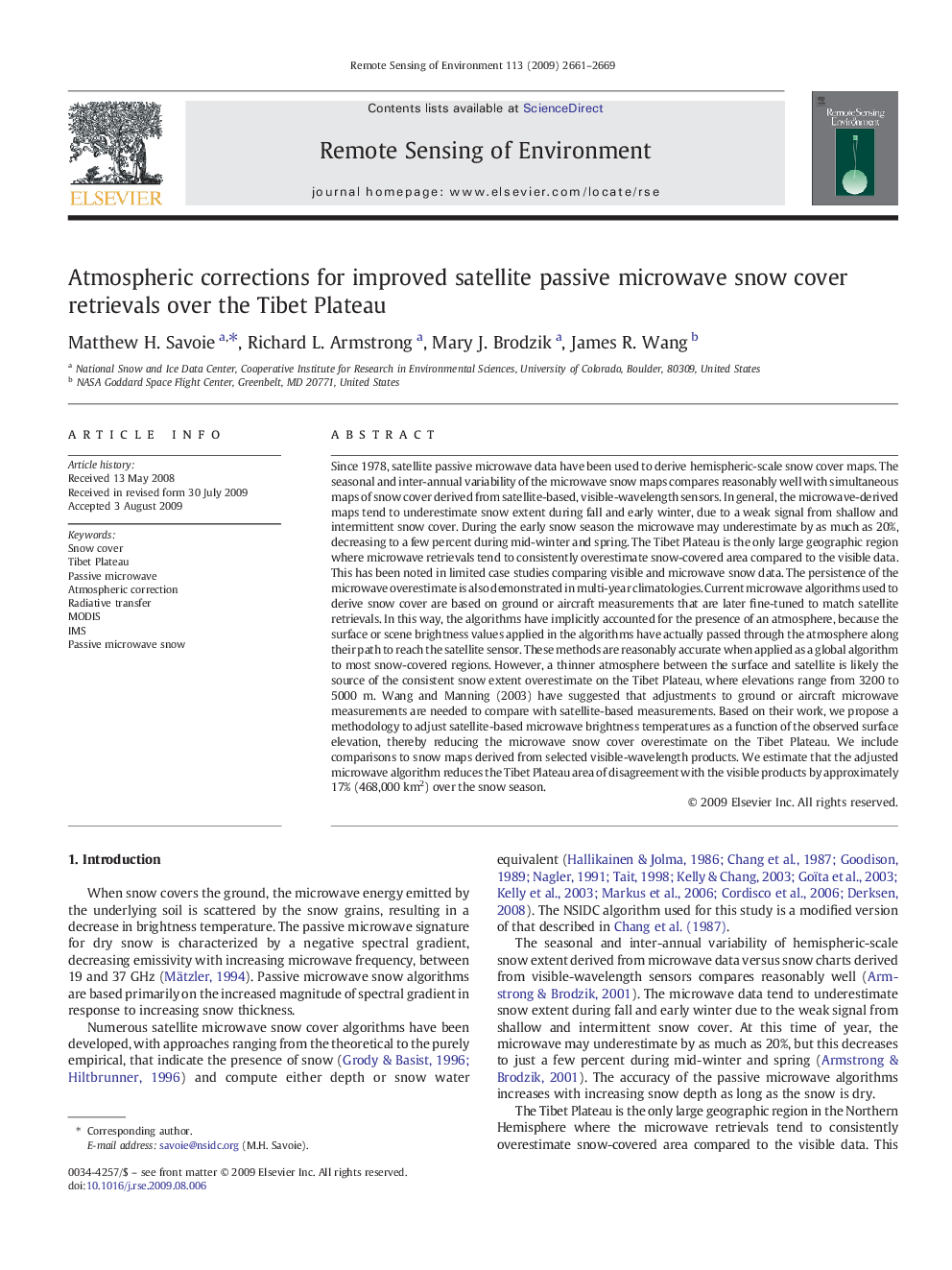| Article ID | Journal | Published Year | Pages | File Type |
|---|---|---|---|---|
| 4460106 | Remote Sensing of Environment | 2009 | 9 Pages |
Since 1978, satellite passive microwave data have been used to derive hemispheric-scale snow cover maps. The seasonal and inter-annual variability of the microwave snow maps compares reasonably well with simultaneous maps of snow cover derived from satellite-based, visible-wavelength sensors. In general, the microwave-derived maps tend to underestimate snow extent during fall and early winter, due to a weak signal from shallow and intermittent snow cover. During the early snow season the microwave may underestimate by as much as 20%, decreasing to a few percent during mid-winter and spring. The Tibet Plateau is the only large geographic region where microwave retrievals tend to consistently overestimate snow-covered area compared to the visible data. This has been noted in limited case studies comparing visible and microwave snow data. The persistence of the microwave overestimate is also demonstrated in multi-year climatologies. Current microwave algorithms used to derive snow cover are based on ground or aircraft measurements that are later fine-tuned to match satellite retrievals. In this way, the algorithms have implicitly accounted for the presence of an atmosphere, because the surface or scene brightness values applied in the algorithms have actually passed through the atmosphere along their path to reach the satellite sensor. These methods are reasonably accurate when applied as a global algorithm to most snow-covered regions. However, a thinner atmosphere between the surface and satellite is likely the source of the consistent snow extent overestimate on the Tibet Plateau, where elevations range from 3200 to 5000 m. Wang and Manning (2003) have suggested that adjustments to ground or aircraft microwave measurements are needed to compare with satellite-based measurements. Based on their work, we propose a methodology to adjust satellite-based microwave brightness temperatures as a function of the observed surface elevation, thereby reducing the microwave snow cover overestimate on the Tibet Plateau. We include comparisons to snow maps derived from selected visible-wavelength products. We estimate that the adjusted microwave algorithm reduces the Tibet Plateau area of disagreement with the visible products by approximately 17% (468,000 km2) over the snow season.
